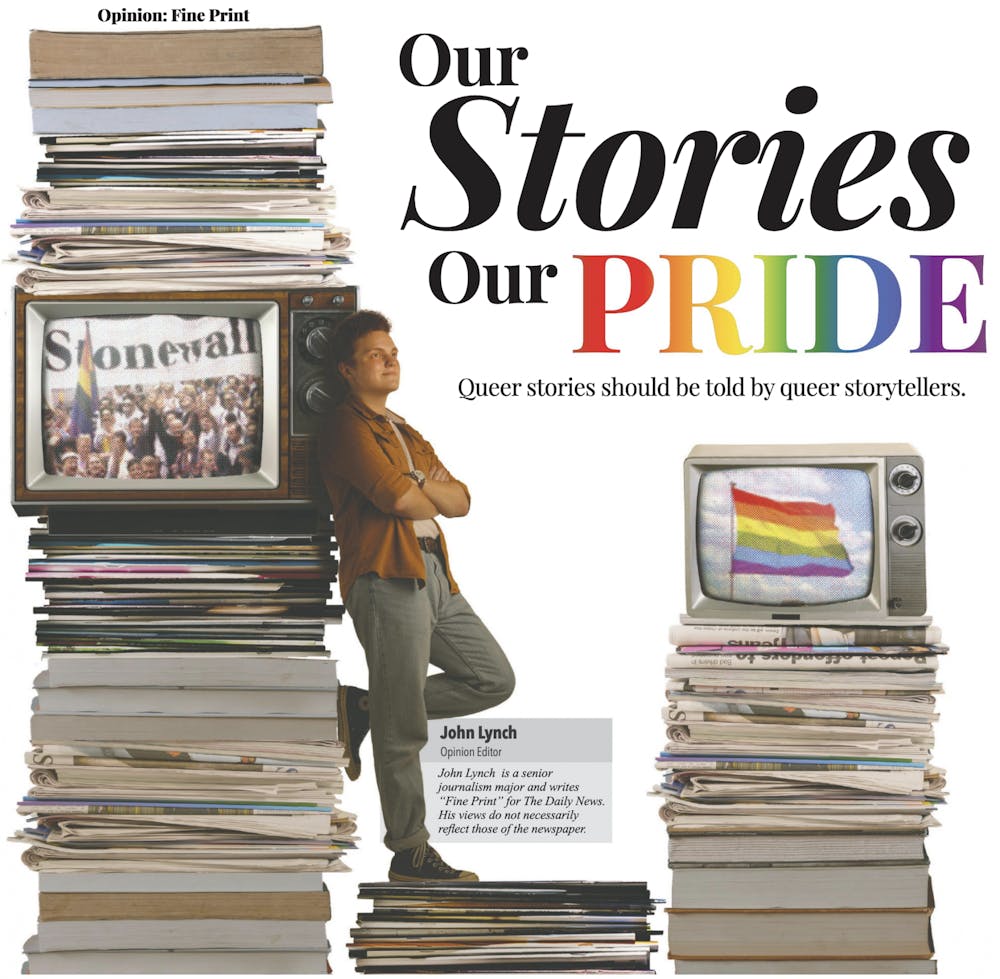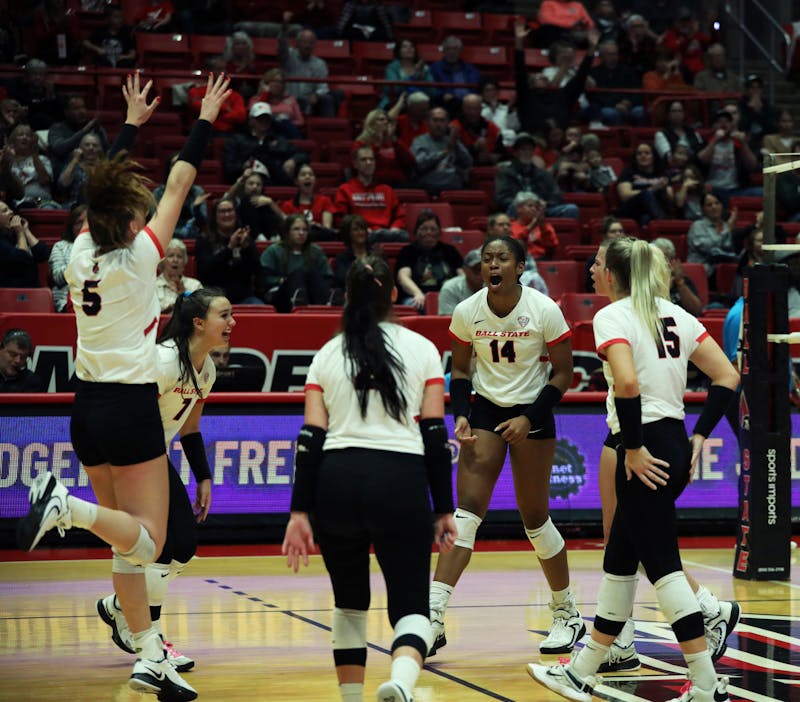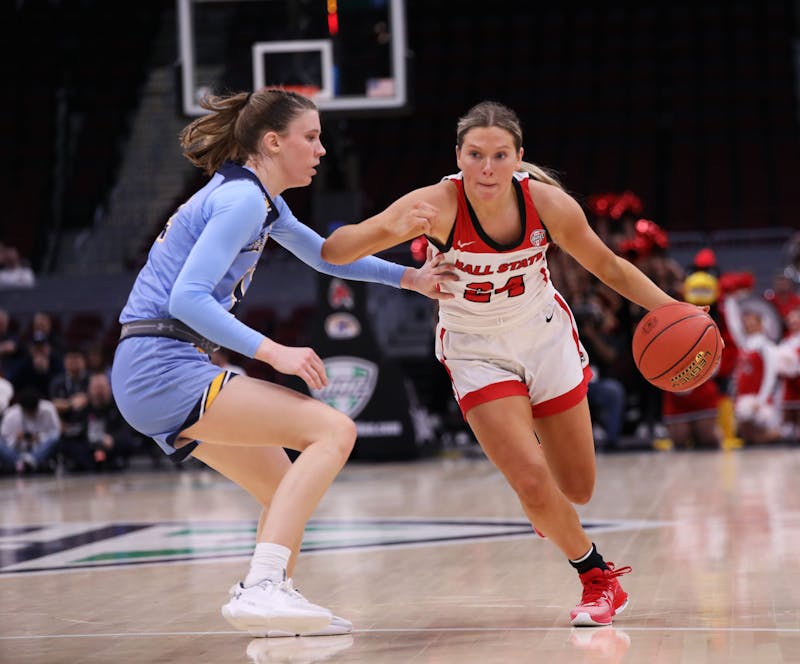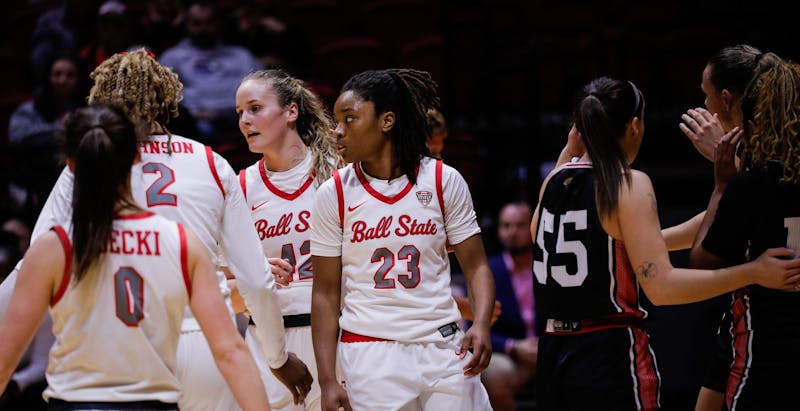The first time I was ever outed was because of the movie “Love, Simon.”
It was 2018, and I saw the movie in the waning months of my senior year of high school with my group of friends, including my girlfriend at the time. It was one of the first times I had ever seen gay love depicted in a largely positive light onscreen, and it brought me to tears in the theater. This didn’t go unnoticed by my friends, who later asked me if I was myself gay via one of the hardest phone calls I’ve ever been a part of.
When I got the call, my stomach dropped. A part of me knew this conversation was inevitable, but that didn’t lessen the anxiety it brought; the feeling of finally plunging from the clifftop was unavoidable in that moment.
“No, but you’re not far off,” I replied.
“Love, Simon” is actually a pretty good microcosm of what my coming out experience was like as a bisexual person. Much like the movie’s protagonist, I didn’t get to come out on my own terms. As such, telling my own story has been something I’ve struggled with. When I left home for college, I let myself embrace my real identity and was open and honest. I explored my sexuality and my identity to find John, hidden behind the fears that shoved me out of the closet while never letting me explore the room.
That’s when my story really began, when I allowed myself to be whole and complete in my real identity, I began to see myself as the protagonist of my own story again. I became a journalist so I could tell other people’s stories better than I was ever able to tell my own.
In journalism, the standard we strive for is neutrality — when we remove ourselves from the narrative, that’s considered a good thing. Keeping our work free of bias is essential to our relationship with our readers, and I wouldn’t change that at all. However, the queer community’s sometimes fraught relationship with the journalistic and entertainment media has made me question who should be telling our stories.
Before I was out of the closet, many of my perceptions of the queer community were shaped through media created by non-queer people. There’s a host of reasons for this — the limited acceptance of LGBTQ people in media historically being one of them — but it led me to a broader realization: We need more queer storytellers.
One of the most important reasons to give more queer storytellers their due is the relatively short length of queer media’s history. Western society has largely been taught to repress and shun queer people until the late 20th century, to the point that openly telling our stories was off the table until the last 30 years or so. While history is littered with references to periods of queer acceptance, the predominant attitude toward this community has been intolerance.
As such, media that is authentic to the queer experience is few and far between. Excluded from the mainstream, our understanding of queer media is still in its infancy — shouldn’t it be queer storytellers forging the modern understanding of this genre?
When queer representation is done wrong, it breaks my heart, but it also strengthens my desire to do it right.
Ever wonder why your favorite Disney villain has such a … unique flair? It’s the age-old trope of making queer people out as the enemy. For example, the evil, scheming Ursula in Disney’s “The Little Mermaid” is based on ‘80s Baltimore drag queen Divine.
Ever wonder why gay characters seem to meet untimely demises more than their straight counterparts? That’s the “Bury Your Gays” trope — also known as Dead Lesbian Syndrome — rearing its ugly head and making sure audiences don’t get too comfortable with queer characters.
Ever wonder why so many queer stories end in tragedy? It’s a result of decades of post-AIDS crisis homophobia that said the only good gay is a dead or lonely one. “Call Me By Your Name” and “Brokeback Mountain” probably wouldn’t have ended in heartbreak if the main characters were straight.
To live in a closet is to hide, to make yourself a stranger in your own eyes, providing the rest of the world with a comfortable mask. The queer experience in America is a complicated one to reckon with — one day, you could see yourself truly represented in media for the first time, the next, your rights could be debated on TV like they’re some kind of gift that can just as easily be taken away. How can we expect people to be openly themselves when they are at constant risk of being profiled by inauthentic stereotypes?
At times, I feel guilt for participating in the very industry that has helped shape so many harmful narratives about the queer community. The news media’s coverage of the queer community as it fought for its civil rights in the 20th century was rarely favorable, though it did yield some truly fantastic headlines. “Homo Nest Raided, Queen Bees Are Stinging Mad” from the New York Daily News following the June 28, 1969 Stonewall Riots is a particular favorite of mine.
When the news media wasn’t perpetuating harmful stereotypes, it was doing something arguably worse by not acknowledging or outright ignoring queer stories that needed telling. The New York Times didn’t put the growing AIDS epidemic tearing through the gay community in the ‘80s on its front page until the summer of 1983. David W. Dunlap, a Times Metro reporter at the time, summarized the paper’s attitude toward the crisis in a 2018 T Magazine article.
“There were strong messages that you got that were not written on any whiteboard.” Dunlap said. “You knew to avoid it. It was a self-reinforcing edict: Don’t write about queers.”
The topic of AIDS was shunned due to its prominence in the gay community, making it toxic. The press didn’t take it seriously initially, and neither did the people the press was covering. When Ronald Reagan’s press secretary Larry Speakes was asked about the growing disease in October 1982, he called it a “gay plague,” causing the press room to erupt in laughter, according to a 2015 Vanity Fair article.
By no means is that to say that straight and cisgender people are incapable of telling LGBTQ stories. By most measures, the modern media is far more tolerant than it ever has been.
As a community, however, we have been failed many times by our portrayals in media. It’s why we need more queer storytellers — people who have lived the same experience, who have walked their lives in our shoes.
I’m going to do better for my community through my work. I’ll do it for the people who didn’t get a chance to have their stories told because of who they were or who they loved.
I’ll do it for the version of me who cried during “Love, Simon” and didn’t know why.
I’ll tell the stories my community needs to tell, because if we’re going to tell them, we’re going to tell them the
right way.
Contact John Lynch with comments at jplynch@bsu.edu or on Twitter @WritesLynch.





The Daily News welcomes thoughtful discussion on all of our stories, but please keep comments civil and on-topic. Read our full guidelines here.